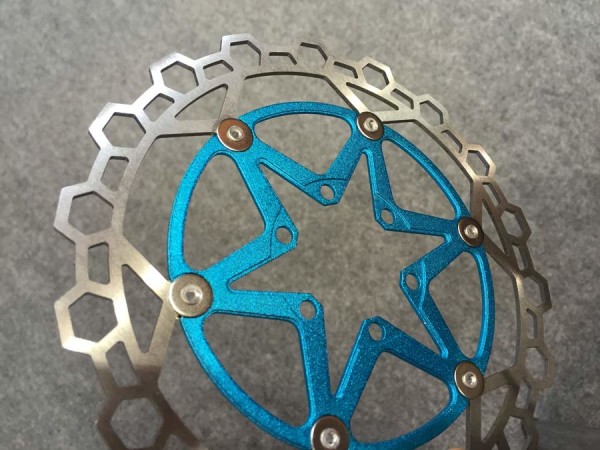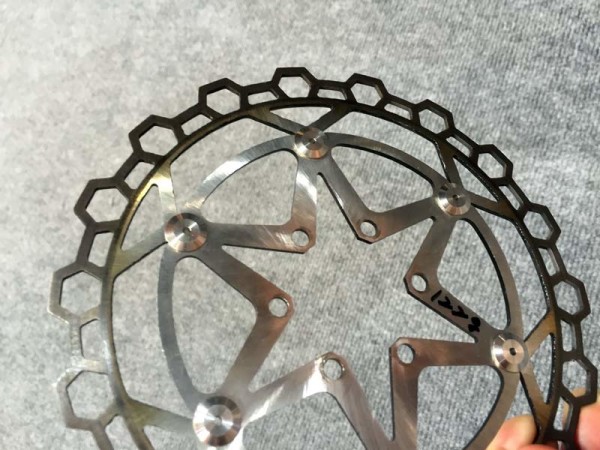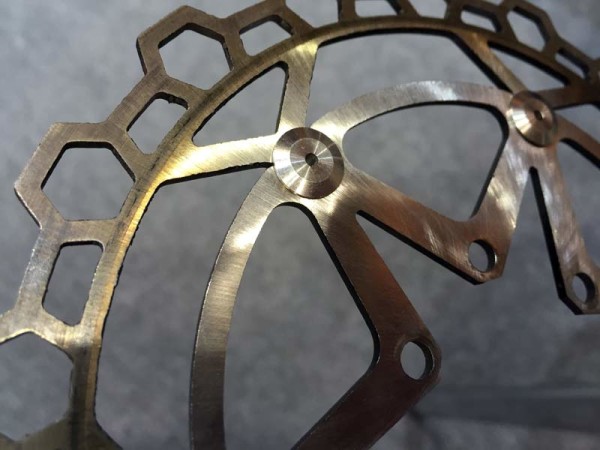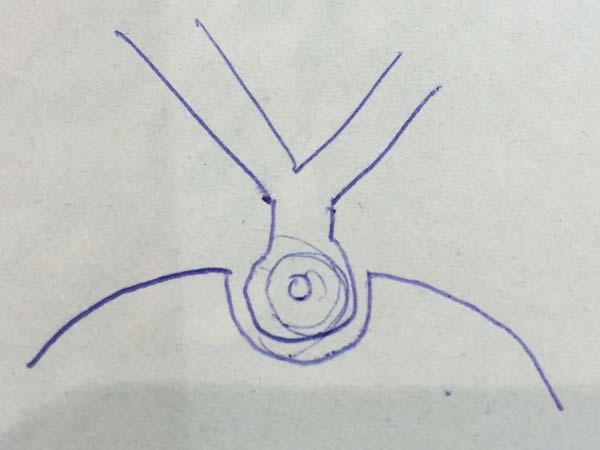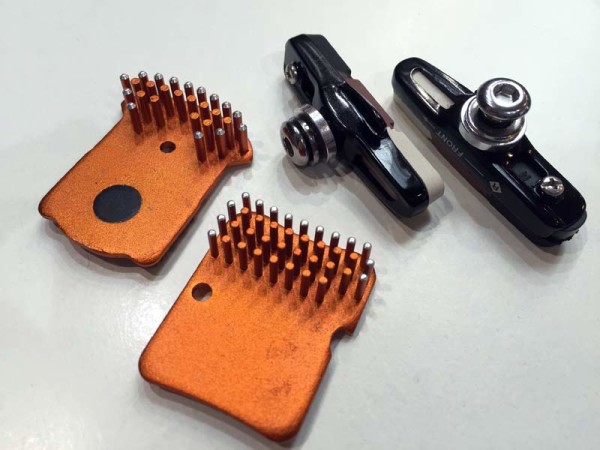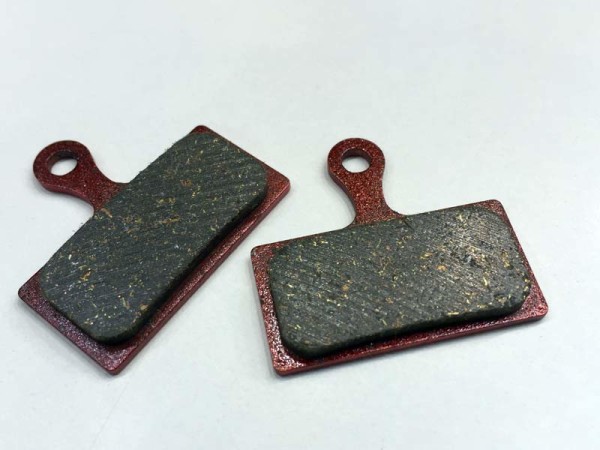Alligator’s never been one to shy away from amazingly cool tools and other small parts. This year didn’t have any showstoppers like the high-voltage cable cutter or digital wheel truing stand. But their new Floating Star rotor has a true floating design, a design they say is extremely common on motorcycles, but not commonly used in its full capacity on bicycles.
The floating design helps move more air around the braking section, and it allows for some heat expansion, but the real advantage is in its ability to reduce stress on the system. Under hard cornering, the fork can bend, which can put the caliper’s pads in contact with the rotor unintentionally. Because these are a true floating design, the braking ring can move side to side slightly to move with the caliper and prevent stress on the system.
They have stainless (above) and alloy (top) center rings, and are working on a titanium carrier. They’re also working on a ceramic carbon brake ring, which may look something like the prototype they showed a few years ago.
They put the rotors through 9,000 hard braking cycles and showed just 0.04mm of twisting deformation at the outside of the rotor.
A “technical” drawing they whipped up for us to show the spacing between rotor and carrier. Approximate weight of the 160mm rotor is 112g with steel carrier. No weights were available for the alloy ones, but both should be available by year’s end.
Their finned Cool Series disc brake pads get updated with a rounded finishing on the outside spikes, which makes it less likely to snag your fancy cycling socks or nick the skin. They come stock with organic braking compounds and a variety of sized to fit most brake brands/models.
Road bike rim brake pads get adjustable shoes and bolts to facilitate proper pad alignment.
New carbon brake pads are for racing only as they wear out in a race or two, but provide consistent braking performance regardless of temperature. Alligator’s reps say they feel much stronger than organic and aren’t affected by heat, it’s just that they wear out very quickly. Available for most common brakes from major brands.
